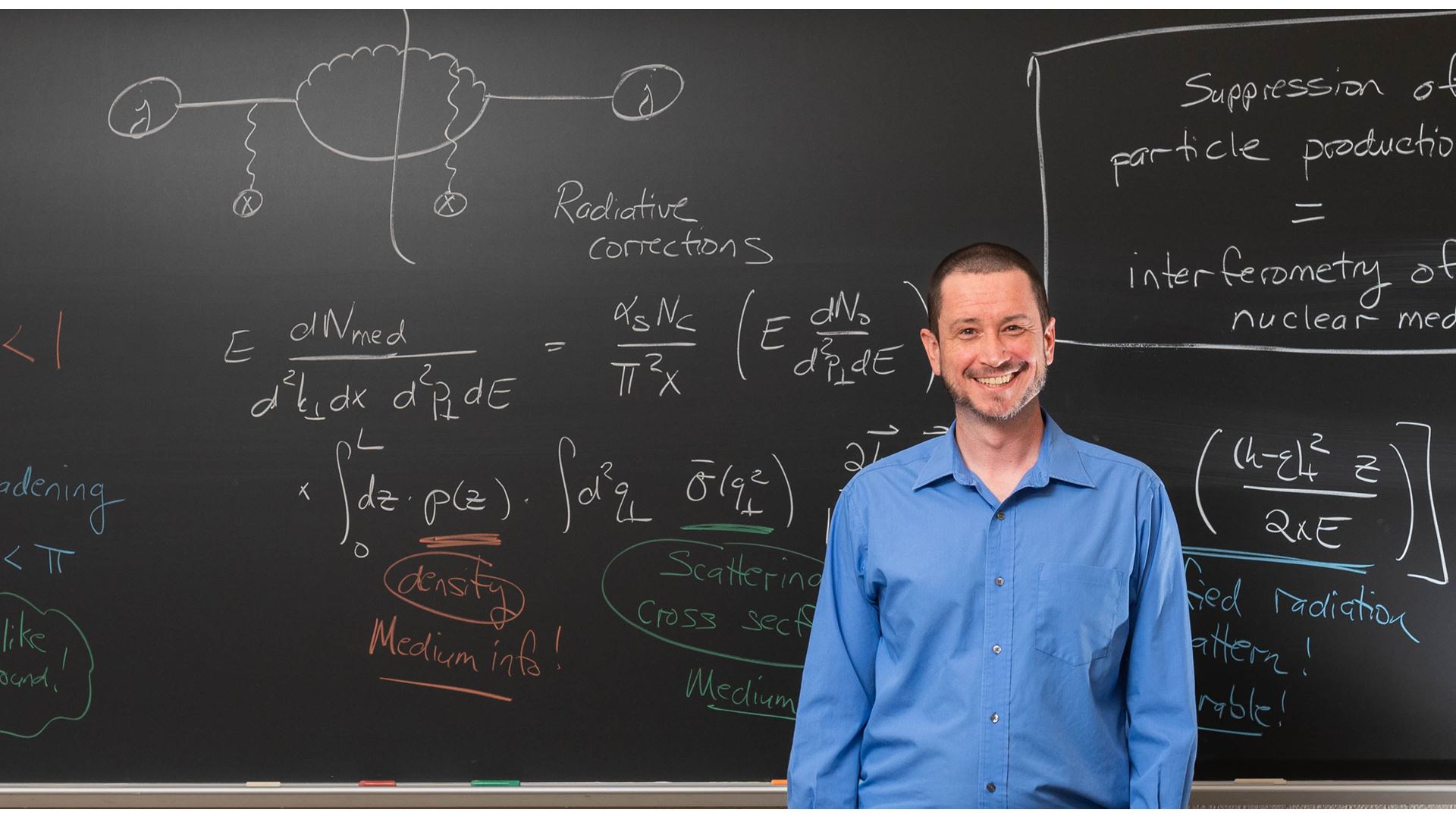NMSU receives DOE award to partner with national labs

The U.S. Department of Energy is pairing minority-serving institutions like New Mexico State University with DOE national labs in a novel way. It’s called Funding for Accelerated, Inclusive Research (FAIR).
Matthew Sievert, NMSU physics assistant professor and principal investigator on the project, will receive a $500,000 FAIR award over three years. Ivan Vitev, a senior physicist at Los Alamos National Lab (LANL), is co-principal investigator.
“The FAIR award supports collaborative research, advanced career mentorship of graduate and undergraduate students, on-site research conducted under expert supervision at LANL and investment in research infrastructure in nuclear theory at NMSU,” Sievert said. “This award effectively supports the creation of a nuclear theory research hub in New Mexico by combining the unique resources of world-leading research institutions and community-serving institutions of higher learning.”
NMSU will receive 75% of the funding, with 25% going to LANL. The funds will support Sievert’s summer salary for the next three years, two graduate students continuously for the next three years and one to two summer undergraduate students per summer every year for the next three years. The rest of the funding will support Los Alamos directly for Vitev’s time as co-principal investigator of the grant as well as expenses for students who will be traveling.
“When I think about the impact of this, what is always first and foremost in my mind is the real-life impact on our students,” Sievert said. “We are trying to build a pipeline for our students to allow us to get our people up to Los Alamos and bring their experts down here on a regular basis. They have bright, talented people willing to come and give their time to contribute to our students, and we need them to provide that professional connection to help our students get all the way out and established into the field.”
Sievert and Vitev have a long-standing relationship dating back to 2016 when Vitev was Sievert’s post-doctoral advisor. Both are eager to renew their collaboration.
“At LANL, students will have access to unique technical expertise, digital data and computational resources,” Vitev said. “These young scientists will further benefit from the vibrant research environment at LANL, the numerous seminar series, conferences and summer schools we organize. They can establish long-term professional relationships with both peers and senior researchers.”
When most of us think about nuclear theory or nuclear physics, we imagine bombs and nuclear reactors. Sievert’s research delves into the microscopic physics of the nuclear force.
“The fundamental nuclear force is inside the proton between even smaller constituents called quarks that are held together by gluons that carry the attractive nuclear force,” Sievert said. “They bind together to make the proton in the same way that the electromagnetic force binds together nuclei and electrons to make atoms.”
Sievert’s research is tied to the use of particle accelerators where scientists can bring together enough energy and enough resolution to see inside a single proton and measure those elementary properties. The largest accelerators that do this work are the Large Hadron Collider at CERN, the European Organization for Nuclear Research, near Geneva, Switzerland, and the Relativistic Heavy Ion Collider at Brookhaven National Lab in New York. Sievert has been working with the collider at Brookhaven National Lab.
“You usually take lead, gold or uranium and collide them together with as much energy as you possibly can get,” Sievert said. “When the two nuclei smash into each other, they create a fireball with a temperature so incredibly high, it’s not been seen since a microsecond after the Big Bang. That fireball melts the protons into their underlying quark and gluon constituents.”
One of Sievert’s main goals has been to get his students involved in his research. Last year, he published a paper along with two NMSU graduate students and one undergraduate. That paper, along with a previous paper Sievert published in 2021 provided the proof of principle that went into the grant application for the FAIR award.
The specific advance that Sievert will study is a new class of observables that have never been looked at before to help better characterize how jet particles are affected by the medium created by the fireball.
“Jet particles are not a part of the fireball, they're a foreign object moving through the fireball, just like a bullet going through water,” Sievert said. “And like a bullet going through water, the jets, as they propagate through the medium lose energy. They slow down and their trajectories get bent and broadened. That's the physics that we're after.”
“At Los Alamos, we are leaders in the theory of subatomic particle jets in reactions with nuclei,” Vitev said. “We will provide training and co-mentorship, research supervision and support for the NMSU students who will pioneer these calculations for inhomogeneous and turbulent plasmas.”
There are fundamental unanswered questions that Sievert and his team will tackle over the next three years. But he’s looking farther along the horizon. High-tech advances are built on fundamental research.
“We have no idea yet whether it's something that we could utilize on earth for technology, but if we ever want to be able to do that, we have to understand the microscopic properties of the proton now,” Sievert said. “It’s always difficult to lay out what kind of rocket thruster we might build in 100 years. But I can tell you that answering these fundamental questions will create new technologies that we can't even conceive of now.”
-30-
CUTLINE: Matthew Sievert, New Mexico State University physics associate professor, has received a three-year award through Funding for Accelerated, Inclusive Research from the U.S. Department of Energy. (NMSU photo by Josh Bachman)
Image Alt: Head and shoulders of a man against a blackboard
CUTLINE: Ivan Vitev is a senior scientist at Los Alamos National Lab and co-principal investigator on the U.S. Department of Energy FAIR award. (Courtesy photo LANL)
Image Alt: Head and shoulders of a man
